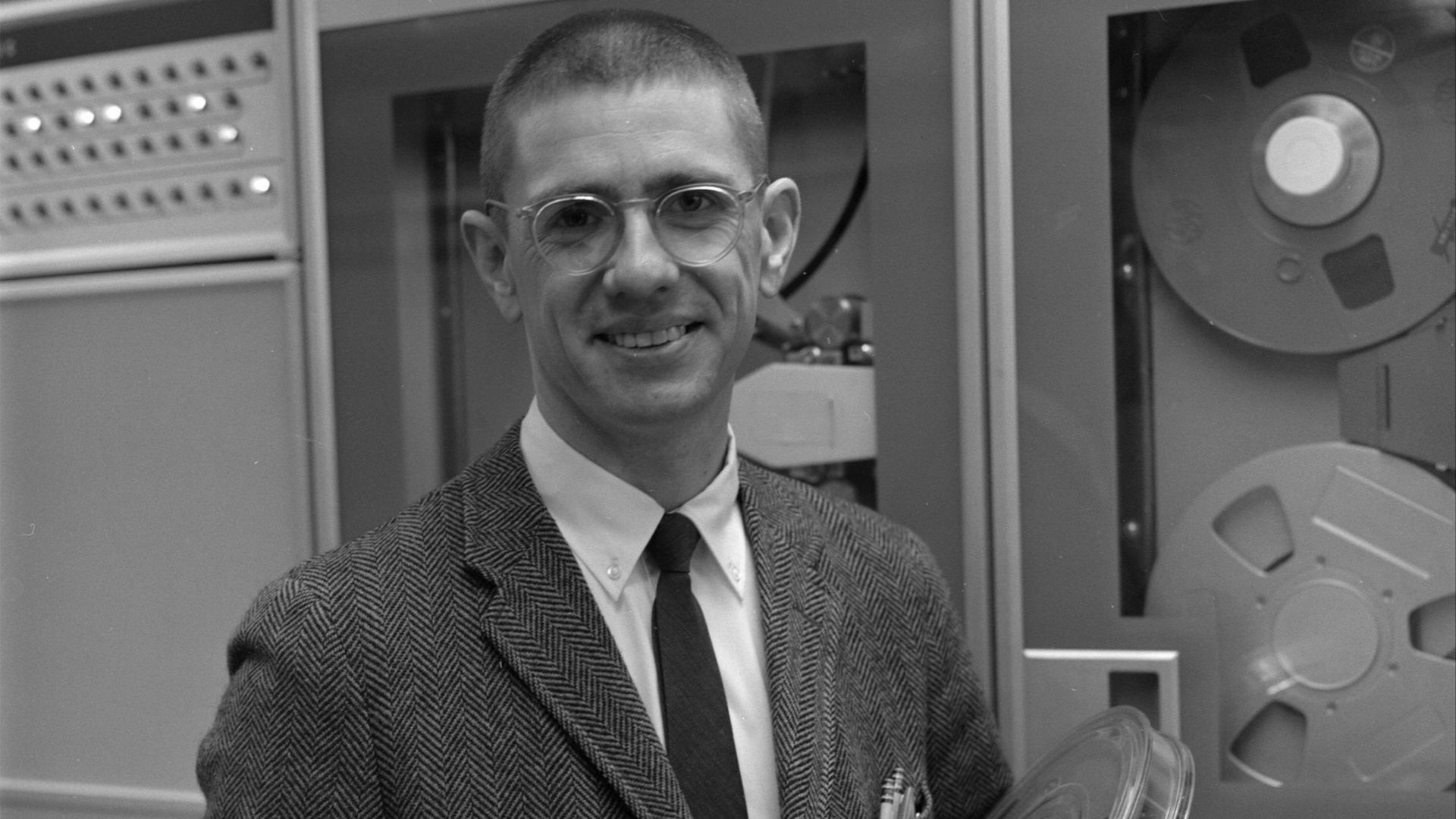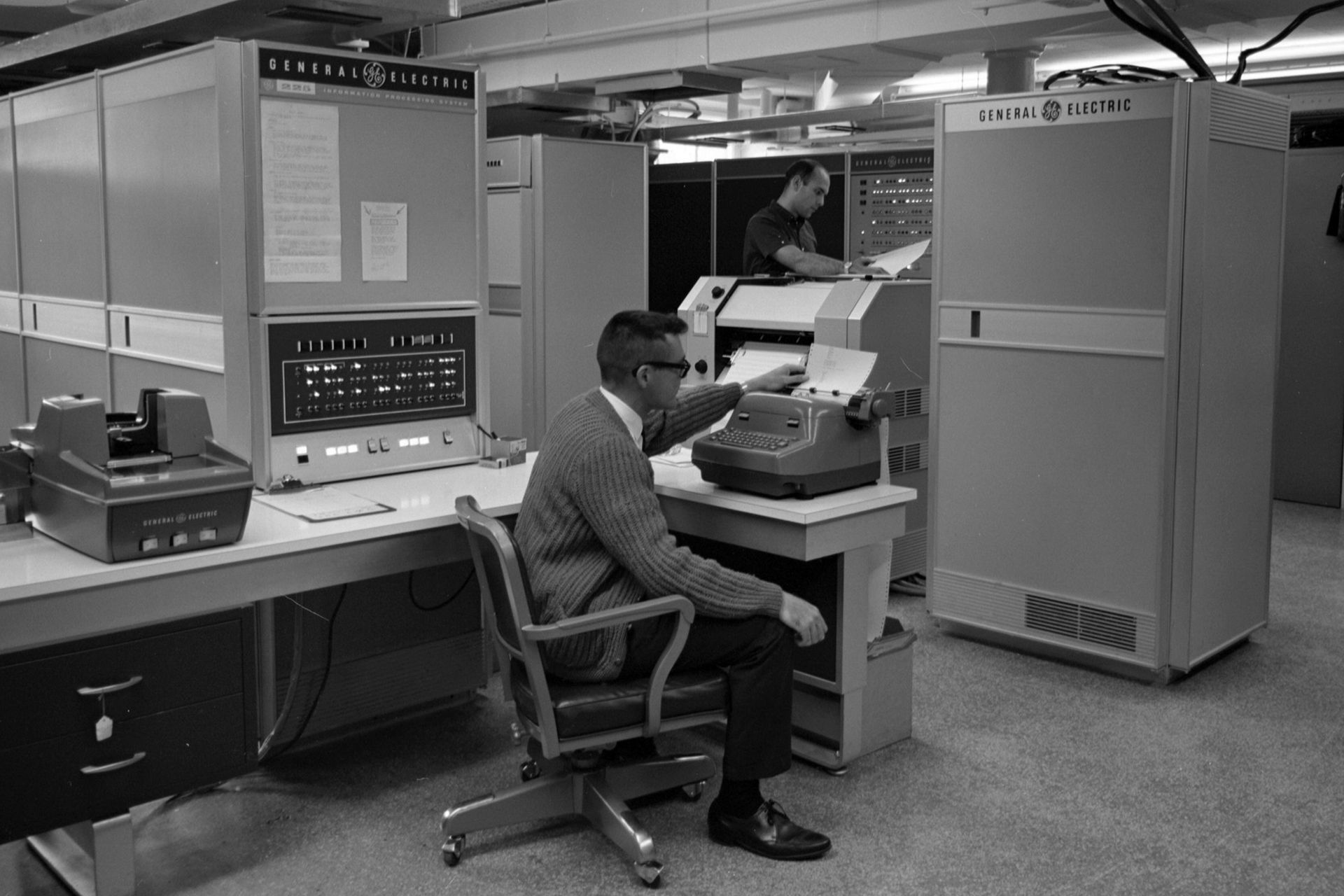尊敬的用戶您好,這是來自FT中文網的溫馨提示:如您對更多FT中文網的內容感興趣,請在蘋果應用商店或谷歌應用市場搜尋「FT中文網」,下載FT中文網的官方應用。


At the start of the 1960s, when most computers occupied an entire room, the world’s programmers could barely fill a baseball stadium. Only a few thousand specialists could wrangle arcane coding languages such as Fortran and Cobol, and the unwieldy mainframes they ran on.
20世紀60年代初,當大多數電腦佔據整個房間時,全球的程式員幾乎無法填滿一個棒球場。只有幾千名專家能夠駕馭像Fortran和Cobol這樣晦澀的編碼語言,以及它們運行的笨重大型機。
By the mid-1970s, there were millions of programmers. Computing’s first step into the mainstream was driven by the work of Thomas Kurtz, who died this month at the age of 96, and his fellow Dartmouth College professor John Kemeny. In 1964, the pair created a simple, fast and intuitive programming language called Basic. “It was the first effort in the history of computing to try to bring computing . . . to the masses,” he recalled in a 2014 documentary.
到20世紀70年代中期,程式員的數量已達數百萬。電腦進入主流的第一步是由托馬斯•庫爾茨和他的達特茅斯學院(Dartmouth College)同事約翰•凱門尼(John Kemeny)推動的。庫爾茨本月去世,享年96歲。1964年,這兩位創造了一種名爲Basic的簡單、快速且直觀的編程語言。他在2014年的一部紀錄片中回憶道:「這是電腦史上第一次嘗試將電腦帶給大衆的努力。」
“All of us who have written code in the past 60 years can thank Thomas Kurtz,” said Bill Gates, Microsoft’s co-founder, who as a teenager created his first computer program in Basic and launched Microsoft in 1975 with a version of Basic for microcomputers. “In the 1960s, when computers were massive, expensive and only available to scientists, he believed everyone should have access.”
微軟聯合創辦人比爾•蓋茲(Bill Gates)說:「我們所有在過去60年中編寫過代碼的人都應該感謝托馬斯•庫爾茨。」他在十幾歲時就用Basic成立了自己的第一個電腦程式,並於1975年推出了微軟公司,其Basic版本適用於微型電腦。「在20世紀60年代,電腦體積龐大、價格昂貴,而且只有科學家才能使用,但他認爲每個人都應該有機會使用電腦。」
From the start, Kurtz wanted to create a system that even humanities students at Dartmouth could use with just a couple of hours’ instruction. Basic — which stands for Beginner’s All-Purpose Symbolic Instruction Code — replaced the inscrutable commands of other coding languages with ordinary English words such as “LET”, “IF” and “THEN”.
從一開始,庫爾茨就想成立一個系統,即使是達特茅斯學院的人文學科學生也只需幾個小時的指導就能使用。BASIC(初學者通用符號指令代碼)用普通英語單詞如「LET」、「IF」和「THEN」取代了其他編程語言中晦澀難懂的命令。
It was developed alongside another innovation by Kemeny and Kurtz called “time sharing”, which allowed several people to use a mainframe computer simultaneously. Together, these ideas paved the way for the personal computer revolution of the 1970s and 80s, as well as the cloud computing industry that followed decades later.
它是與凱門尼和庫爾茨開發的另一項創新「分時」同時發展起來的,這項技術允許多人同時使用一臺大型電腦。這些想法共同爲20世紀70年代和80年代的個人電腦革命,以及幾十年後隨之而來的雲端計算行業鋪平了道路。
Born in 1928 in the Chicago suburb of Oak Park, Kurtz trained as a mathematician, receiving his PhD from Princeton in 1956. That year, he was hired by Kemeny to teach maths at Dartmouth, where he would stay for nearly 40 years.
庫爾茨於1928年出生在芝加哥郊區的奧克帕克,接受了數學家的培訓,並於1956年從普林斯頓大學獲得博士學位。同年,他被凱門尼聘請到達特茅斯學院教授數學,並在那裏工作了將近40年。
When Dartmouth got its own computer in 1959, Kemeny and Kurtz wanted it to be something everyone on campus could use. MIT was already using the concept of time sharing for research: instead of “batch processing” each job in full, time-sharing systems ran multiple jobs for one second at a time. Kurtz’s insight was to tap this for educational purposes, which he said was a “completely nutty idea” at the time.
1959年,達特茅斯學院獲得了自己的電腦。凱門尼和庫爾茨希望它能成爲校園內每個人都能使用的工具。麻省理工學院(MIT)已經在研究中使用了時間共享的概念:與其完全「批處理」每個作業,分時系統每次運行多個作業一秒鐘。庫爾茨的獨到之處在於將其用於教育目的,他當時稱之爲「完全瘋狂的想法」。
Dartmouth’s first computer wasn’t capable of running a time-sharing system but Kurtz and Kemeny started hand-coding one, recruiting undergraduates to help. Kurtz’s edict to the students was: “In all cases where there is a choice between simplicity and efficiency, simplicity is chosen.”
達特茅斯學院的第一臺電腦無法運行分時系統,但庫爾茨和凱門尼開始手工編寫一個,並招募大學生協助。庫爾茨對學生的指示是:「在所有情況下,如果要在簡單和高效之間做出選擇,就選擇簡單。」
If the Dartmouth time-sharing system was the forerunner of today’s operating systems, Basic was its first app. Its brilliance was in its instantaneity: a simple Basic program could produce a response in just a couple of seconds.
如果說達特茅斯分時系統是當今操作系統的先驅,那麼Basic就是它的第一個程式。它的亮點在於即時性:一個簡單的Basic程式只需幾秒鐘就能做出響應。


An early morning test on May 1 1964 proved that both systems worked, when two Basic programs ran simultaneously on Dartmouth’s new General Electric mainframe using time sharing. Kurtz soon hooked it up to teletype machines around campus, which could send messages to the mainframe and then print the responses. Hundreds of students were soon using it and the Dartmouth network was later extended to universities around the US, via telephone lines.
1964年5月1日清晨的一次測試證明了兩個系統都能正常工作,當時兩個基礎四國程式利用分時技術在達特茅斯學院的新奇異公司主機上同時運行。庫爾茨很快將其連接到校園內的電傳打字機上,這些打字機可以向主機發送資訊,然後列印回覆。數百名學生很快開始使用它,達特茅斯學院的網路後來透過電話線擴展到美國各地的大學。
“This notion of remote access, which predominates computing nowadays, aside from PCs . . . Tom was at the forefront of seeing where that was going to go,” says Stephen Garland, who met Kurtz while an undergraduate at Dartmouth and later became a professor there, steering development of the Dartmouth Time-Sharing System and Basic.
斯蒂芬•加蘭(Stephen Garland)說:「除了個人電腦,這種遠距訪問的概念在當今的計算中占主導地位……湯姆站在了最前沿,他看到了這將走向何方。」加蘭在達特茅斯大學讀本科時遇到了庫爾茨,後來成爲那裏的教授,主導了達特茅斯分時系統和Basic的開發。
Kurtz believed 5mn people already knew how to write Basic by the time Microsoft launched its version for the Altair 8800. Many more versions followed, including by IBM and UK computer-maker Acorn, whose BBC Basic was used in many British schools in the 1980s.
庫爾茨相信,當微軟推出針對Altair 8800的Basic版本時,已經有500萬人會寫Basic了。隨後,IBM和英國電腦製造商Acorn等公司推出了更多版本,其BBC Basic在20世紀80年代被許多英國學校使用。
While Kemeny, who died in 1992, has been the better known of the two, Kurtz deserves recognition as an “equal partner”, according to Garland.
根據加蘭的說法,雖然1992年去世的凱門尼在兩人中更爲知名,但庫爾茨應當被視爲「平等夥伴」。
The two professors foresaw that computing would be so widespread that universities needed to help their students understand it. “They realised that decisions would have to be made about computer use in society and it was better that large numbers of people understood what computing was,” said Garland, “so they were not taken in by jargon or the idea that the computer was always right.”
這兩位教授預見到,電腦將普及,因此大學需要幫助學生了解電腦。加蘭說:「他們意識到,必須就電腦在社會中的使用做出決定,最好讓大量的人瞭解電腦是什麼,這樣他們就不會被行話或電腦總是正確的想法所迷惑。」